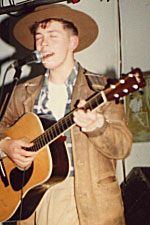
Every two or three years seemingly Michael Head stirs himself just enough to put together a set of recordings that occasionally remind us that he’s one of the most gifted songwriters of his generation. It’s normally a good excuse to dust down a few old stories, and dig out a few records from his back catalogue. Not that one needs an excuse, but …
The most recent offering from Michael Head and Shack, … the Corner of Miles and Gil, has perhaps prompted a few younger eyebrows to be raised. Shack making references to jazz expeditionaries? There were I bet more than a few older brows furrowed with lines of disappointment. The title had after all suggested something a little stranger than West Coast classicism. Perhaps something more along the lines of Robert Wyatt’s Cuckooland, and his own allusion to being on the corner with Miles and Juliette Greco on Old Europe.
The title’s natural enough. When a horribly young Michael Head first set out with his Pale Fountains in the early ‘80s they were part of a very definite revolution beyond punk, the only possible one, away from obvious rock. The Pale Fountains’ twist on this was to steep themselves in old Love records (which was a revolutionary experience for those too young to be out there the first time around), and thence make the connection to the pioneering ballads of Bacharach and David*1, and on to the sounds of bossa nova and latin american jazz. It was a completely contrary stance, and one that needed some working on. After all in the early ‘80s for kids who had grown up on punk it was not that easy to suddenly familiarise oneself with the works of Jobim and Gilberto. Except by listening to Radio Two perhaps*2. Even so Tropicalia wasn’t on the tip of hipsters’ tongues and names like Joyce and Nascimento were not heard around our way.
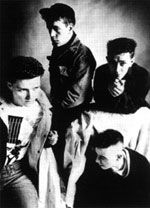
The Pale Fountains were not alone in turning their backs on rock orthodoxy. In Scotland the second generation of Postcard groups (like Aztec Camera and the Jazzateers*3) aspired to a folk balladry and jazz intimacy, while the label’s patron saint Vic Godard preached the gospel of a new middle of the road inventiveness. In Manchester A Certain Ratio would become more and more infatuated with latin rhythms, and close comrades the Swamp Children would develop an impressively adventurous jazz/latin sound that was well ahead of the game, and in time they would become Kalima who would be completely immersed in the jazz milieu*4. Elsewhere in Manchester New Hormones’ Dislocation Dance would increasingly incorporate jazz and classic pop flavours in their repertoire, though the Pale Fountains filched their trumpet player.
In London Weekend evolved from the diy experimentalism of Rough Trade’s Young Marble Giants and the Scritti Politti coterie, with the incredibly influential 'A View From Her Room' single being responsible for awakening many people to the possibilities of jazz. The combination of Alison Statton’s strangely seductive singing and Simon Booth’s jazz vision would make Weekend’s La Variete set an important milestone.
In Bristol the repercussions of the Pop Group continued to reverberate, and its offshoots like Rip Rig and Panic would similarly help many people make connections to the world of jazz, not least through singer Neneh Cherry and father Don. Other Pop Group tributaries like Pigbag and Maximum Joy would record for former patron Dick O’Dell’s Y label, conjuring up for the media a real sense of beat boho cool, and some enduring and absolutely classic records.*5
You could go on and on. There was the astonishing voice of (spitfire blonde as Mahalia) Carmel*6. There was the Style Council’s desperation to shake off the shackles of The Jam, with Weller becoming very much in love with an internationalist/socialist future, coloured by old Godard movies and Gil Evans recordings, and a mythological mainland Europe, which back in the real world had people like Antena and Marine making similar links to jazz noir and sunny bossa nova. Meanwhile back in clubland, important scenes were developing in Manchester and London, with DJs like Paul Murphy and Gilles Peterson playing out for a new jazz dance generation.
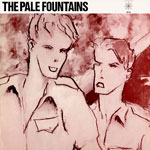
The Pale Fountains could have signed to Postcard, but that would have been too obvious. They could have signed to Rough Trade, but that would have been too easy. Trying to smooth the ground though, the ever avuncular Rough Trade boss Geoff Travis arranged for the Pale Fountains to record with Robin Millar, who was rapidly becoming the producer of choice for the participants in the only possible revolution*7. He produced Weekend’s La Variete, went on to work with Working Week (Simon Booth’s soul jazz project), Sade*8, Everything But The Girl, and had his name on the credits for the Fine Young Cannibals, Bluebells, Black, and Vic Godard’s 'Nice On The Ice'. He was in many ways the naturalistic antidote to the Trevor Horn school of special effects and everything but the kitchen sink synths and sequencer sequences.
Millar was also involved in the soundtrack for the ultimately doomed musical of Colin MacInnes’ Absolute Beginners, which also had input from Gil Evans. The book itself was almost a bible for people growing out of the mod thing and into a serious jazz frame of mind. The film was a spectacular disaster though, ridiculously wrong in so many ways*9, but it has a discrete charm and many magical moments nevertheless*10. Meanwhile Geoff Dyer was writing a novel that would capture the spirit of this new jazz bohemianism, The Colour of Memory.*11
The Pale Fountains themselves had signed to Virgin, and Michael Head gradually perfected the art of eluding success. Despite writing a string of absolute classic songs (like 'Unless', 'You’ll Start A War', 'Palm Of My Hand', 'Jean’s Not Happening', 'From Across The Kitchen Table', 'Love Situation') for the Pale Fountains, their records somehow ridiculously did not connect with the real world. Contrariness and identity crises did not help. Bossa and jazz allusions were abandoned, and diversions into grand elegance like the Associates and which Pale Fountains producer Peter Walsh would explore with Scott Walker were only hinted at. Melodic conventionality became the chosen setting for some stunning songs, and the choice of the conservative Ian Broudie as producer too often only reinforced the ostensible ordinariness through which as Pale Fountains, Shack or the Strands the occasional gem would still spectacularly shine through.
That’s the bitter truth but it hardly hints at the greatness Michael Head had, ahem, in the palm of his hand. The Pale Fountains were part of a group of doomed romantics that came along after the Mersey-based Crucial Three (Teardrop Explodes, Bunnymen, Wah!) had gone overground. Along with the Wild Swans and Send No Flowers*12, the Pale Fountains would be the coolest thing on the planet momentarily. The Wild Swans’ Paul Simpson tells a story about how Orange Juice turned up for a show in Liverpool and were outraged to find the support acts (Wild Swans and Pale Fountains) had better haircuts and more handsome guitars when those things mattered more than being able to play well.
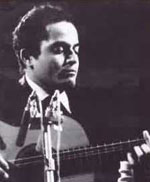
In many ways, again arguably like Orange Juice, the Pale Fountains paved the way for the Smiths. The iconography was strikingly similar, such as the same references to that whole genre of British kitchen sink drama, like A Kind of Loving, Saturday Night and Sunday Morning, L-Shaped Room, This Sporting Life. But quite simply the Pale Fountains at all times looked so much better than the Smiths ever did.
And the look was so very important. The Pale Fountains very early on acquired a reputation for being exceptionally cool. Arguably only Orange Juice and A Certain Ratio could compete. The Pale Fountains particular look at first was all about crew cuts*13, and a sense of being a group of urchins off rambling like Ewan MacColl immortalised in song when that was all the working class could afford for free pleasure. The joke at the time was that with their baggy shorts and ‘kerchiefs tied nonchalantly round their necks they were equal parts Baden Powell the scouting pioneer and equal parts Baden Powell the Brazilian bossa nova guitarist.
Instead of signing to Rough Trade the Pale Fountains signed to Virgin, and the debut single for the major ('Thank You' c/w 'Meadow of Love') featured some exquisite shots of the group cavorting at Hampton Court. The pictures were taken by the important American photographer Birrer, and somehow they mark the end of innocence*14.
© 2006 John Carney
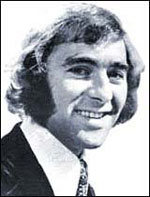
*1 There was an interesting echo here a handful of years later when the earliest Wild Bunch/Smith & Mighty recordings were built on a bedrock of Bacharach and David baroque balladry.
*2 This particular defiant pose was captured perfectly
in a letter to The Face in the summer of ’81 which I cut
out and treasured. It argued: “What a joy to know that at
least a few go on, and out of the carnage and devastation left by punk,
through the smoke still hanging in the air we see, we hear …Radio
Two.
“And you know there are so few of us, having trod the path of the latter
half of the ‘70s, that have now arrived at our next destination. Sountracks,
vistas, horizons, wide landscapes, visual textures, panoramas foreign to our
experience. Music wrought out of pain, romance, love, hate, spirit of
place, experience. No artifice.
“Even the lyricist, with his word making, simply crammed experiences
into lives rather than dragged lives out from grasping inexperience.
“Radio Two is the entrée to music beyond artifice. They
(unknowingly?) support the Sex Pistols in a way no other mass media does. Music,
musical, based upon life, dependent upon life for their existence. ‘Never
mind the b … set ‘em up Joe, it’s a quarter to three.
“Wake up to the wit of Ray Moore. Radio Two really does break down
those barricades put up after ’76.” The first time I heard
Love’s 'Alone Again Or' was one morning on the Ray Moore show. It
was a religious experience.
*3 This is important. The Jazzateers would later record for Rough Trade, but the early Postcard incarnation with Alison Gourlay on vocals inhabited a world where the Velvets’ 'Foggy Notion' would be played alongside Billie Holiday’s 'A Foggy Day'. It was a similar place to where the Pale Fountains started. Both groups were brave enough to namedrop Simon and Garfunkel. Some people still struggle with that. They shouldn’t.

*4 This is a fascinating area. In Tony Wilson’s memoir he feigns horror at A Certain Ratio evolving into a jazz outfit. Singer from the Swamp Children Ann Quigley provided artwork for early ACR records (including the controversial To Each sleeve), and there was plenty of interaction between the two groups. ACR’s Simon Topping produced early great recordings by the Swamp Children. As the group matured, and preferred to be known as Kalima, so the sound became more proficient, though arguably they lacked the songs. Their finest moment remains a cover of 'The Smiling Hour', and there’s a very evocative film still in circulation to accompany the song which captures a Manchester city centre now lost. Kalima were for a while managed by Nathan McGough, who had also looked after the Pale Fountains. Tony Wilson described Kalima as “Sade two years too early, progressive latin american funk from a Hulme squat”. Sade’s successful producer Robin Millar had offered to record the first Kalima LP but Factory had baulked at the budget.
*5 Dick O’Dell is one of those shadowy svengali figures who could have been as big as Malcolm McLaren. His achievements, accidental or otherwise, with Y Records should not be underestimated though. As well as records by the Pop Group, Slits, Pigbag and Maximum Joy, there were a number of other significant releases, like (well nothing’s like …) Diamanda Galas’ The Litanies of Satan, Sun Ra’s Strange Celestial Road and Nuclear War (which Yo La Tengo much later did a great version of), Steve Beresford’s Double Indemnity and Imitation of Life, and the Fearless Four’s Rockin’ It. At the time though who would have guessed Pigbag’s bit hit would become a football terrace favourite?
*6 The trio Carmel came out of Manchester, and their first major label recordings were produced by Mike Thorne, one of the great thinking producers. Most of us immediately associate Thorne with Wire, and he became an integral part of the group. The three Wire LPs he produced are perfect. After Wire, he produced all sorts of records, including Soft Cell’s 'Tainted Love', which became absolutely enormous, and resonates still, most recently through the great Rihanna. Thorne in his writings is as passionate about working with Carmel as recording Wire: “We work with edgy, uncompromising people because they look over the edge. The job of an artist is to take intellectual and emotional risks and communicate the experience. Sometimes this degenerates into indulgence. The risk-taker Carmel was not at that time fully formed. But Carmel was able and willing to take those risks, to open her exceptional-sounding mouth and deliver the results of the investigation.” And if you get the chance to listen again to the Thorne-produced The Drum Is Everything set, you’ll find at least a handful of classic cuts, like the stunning 'Bad Day' hit.

*7 I have to confess to thinking not that much about Robin Millar the person despite seeing his name on numerous credits. By chance, though, I stumbled across an interview with him on a Strawberry Switchblade website, which was wonderfully enlightening. He talks about his mid-‘80s sound as “flying in the face of programming everything up”. He also says: “The Postcard Records thing had appealed to me because of its organicness, its awkwardness, the fact that it didn’t seem to be directly coming from anything that was happening elsewhere. It was almost like the result of a rejection of what was going on, and that’s always been what has appealed to me about that. People who’d organised themselves into some kind of art form that they felt was singular, original, not borrowed from what was going on.”
*8 Coincidentally around the time I stumbled across that interview I also found a solo Robin Millar record. It includes a lovely straight cover of Sade’s 'Sweetest Taboo' twenty years on, and I wondered whether Sade really was the sweetest taboo? Millar’s productions for Sade and Everything But The Girl were wonderfully successful and acquired coffee table status. But their beginnings were much more misunderstood. The major labels concerned really did not get it. And to their eternal credit the artists concerned were stubborn and happy to stick with Millar’s organic sound rather than give in to market pressures. Sade in particular remains much loved by the hip hop and r’n’b communities. A Tribe Called Quest’s Q-Tip described meeting Sade as a highlight of his career. Then there’s Brazilian singer Ive Mendes who made the pilgrimage to track down Millar to persuade him to produce her debut set for Mr Bongo, creating a sense of déjà vu for Millar.
*9 At the time mod fanzine The Right Track ran a fantastic feature on the making of the film through the eyes of MacInnes fanatic Lynne Humphries. She is suitably scathing about the clothes in the film, the liberties taken with the script, the lack of attention to detail, the casting. She is however full of praise for the reinvention of Soho in Shepperton, and the clothes worn by Mark Powell and the Robot crew (ah I have very fond memories of an exquisite pair of suede shoes from Robot around then!). The article is reprinted in the great This Is A Modern World, an account of the 1980s London mod scene.
*10 Yes the film is so awful in many ways, but much of its charm derives from an astonishing array of cameos from a range of English originals. David Bowie, James Fox, Ray Davies, Mandy Rice-Davies, Sade, Tenpole Tudor, Alan Freeman, Lionel Blair, Irene Handl, Ronald Fraser, Smiley Culture, Sylvia Sims, Zoot Money, Sandie Shaw, and the great jazz dance crews, IDJ and the Jazz Defektors. There are enough strands to follow there to put together an important history of the second half of the twentieth century.
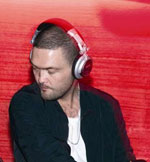
*11 I’m not sure what Geoff Dyer thinks of the book now, but I love it. It’s populated by a host of dole-dreamers, reading Calvino and listening to Coltrane, doing as little as possible with the support of any Government grant going (ah the good old Enterprise Allowance Scheme in the ‘80s funded all sorts of wonderful nonsense!). At one stage, one of the main characters, Steranko, pronounces: “Listen I’ll tell you how I’m involved in politics: I never eat at McDonald’s, I never play electronic games, I’ve not seen five minutes of soap opera on television. I try not to listen to pop music, I never listen to Radio 1; I don’t read the review pages of the Sunday papers. I don’t buy any South African goods, I don’t own a car and generally I don’t spend any money on the kind of crap shops are full of. I’ve no interest in getting a proper job and I don’t care if I never own my own house – when people talk about house prices I don’t listen. I don’t know any bankers or any people who work in advertising – I’ve only ever been to the City once. If someone is reading a tabloid newspaper I try to make sure I don’t see it. Ok?” So, ok, it’s a bit of a send up, but it captures the spirit of the age. Dyer would go on to write a much more serious and ambitious book about jazz, But Beautiful.
*12 Send No Flowers seem to be a forgotten part of the Liverpool pop jigsaw. They recorded the obligatory Peel session, released one great 7” (good jagged Au Pairs noise). Singer Lin Sangster went on to form Kit. More great prickly pop. Dave Haslam wrote first about them in his Debris magazine, and then released records by them on his Play Hard label. Lin has one of the great pop voices, and would much later record alone as Bad Anorak 404, where she sang gorgeous lovelorn and careworn acoustic ballads underscored by crackling electronica on a frayed shoestring budget which may have better suited her good friends Shack more than …
*13 As the sleevenotes to the essential Wild Swans compendium proves Victor the barber was central to the Liverpool myth. It is a matter of some conjecture though about who found him first. Paul Simpson claims to have been the first on the scene to have that 1930s cut. Bill Drummond has written eloquently too about discovering Victor. The Pale Fountains’ manager Nathan McGough is sometimes credited with being there very early with that severe short back and sides cut popularised by A Certain Ratio and indeed the Swamp Children. Later I heard while Shack played Victor would be there cutting hair. It is one of my great regrets that I never had my hair cut by Victor. And yet I bet Michael Head never had his hair cut at the barber I used to love going to near Waterloo just over the road from Alaska Studios where a lot of the early Creation artefacts were recorded on the cheap, and the Jasmine Minks would rehearse on a Saturday.
*14 We pop-aesthes and music obsessives have a horrible tendency to lament the way things turn out. Yet we need to celebrate the way sometimes things do turn out wonderfully well. For example, I love the fact Ben Watt, well over 20 years on from the first Everything But The Girl LP, has evolved into an ultra-respected soulful house DJ, and is the man behind the classy Buzzin’ Fly imprint, and occasionally ventures into experiments fusing spoken word story-telling with deep house. As I saw him quoted recently, talking about Jonathan Richman: “This is where I want to go, this minimalism, this directness and freshness which cut away the pomposity and excess of rock.”